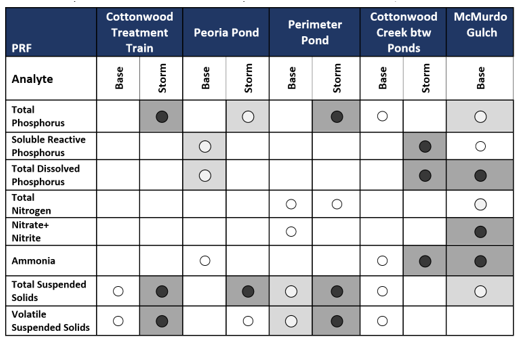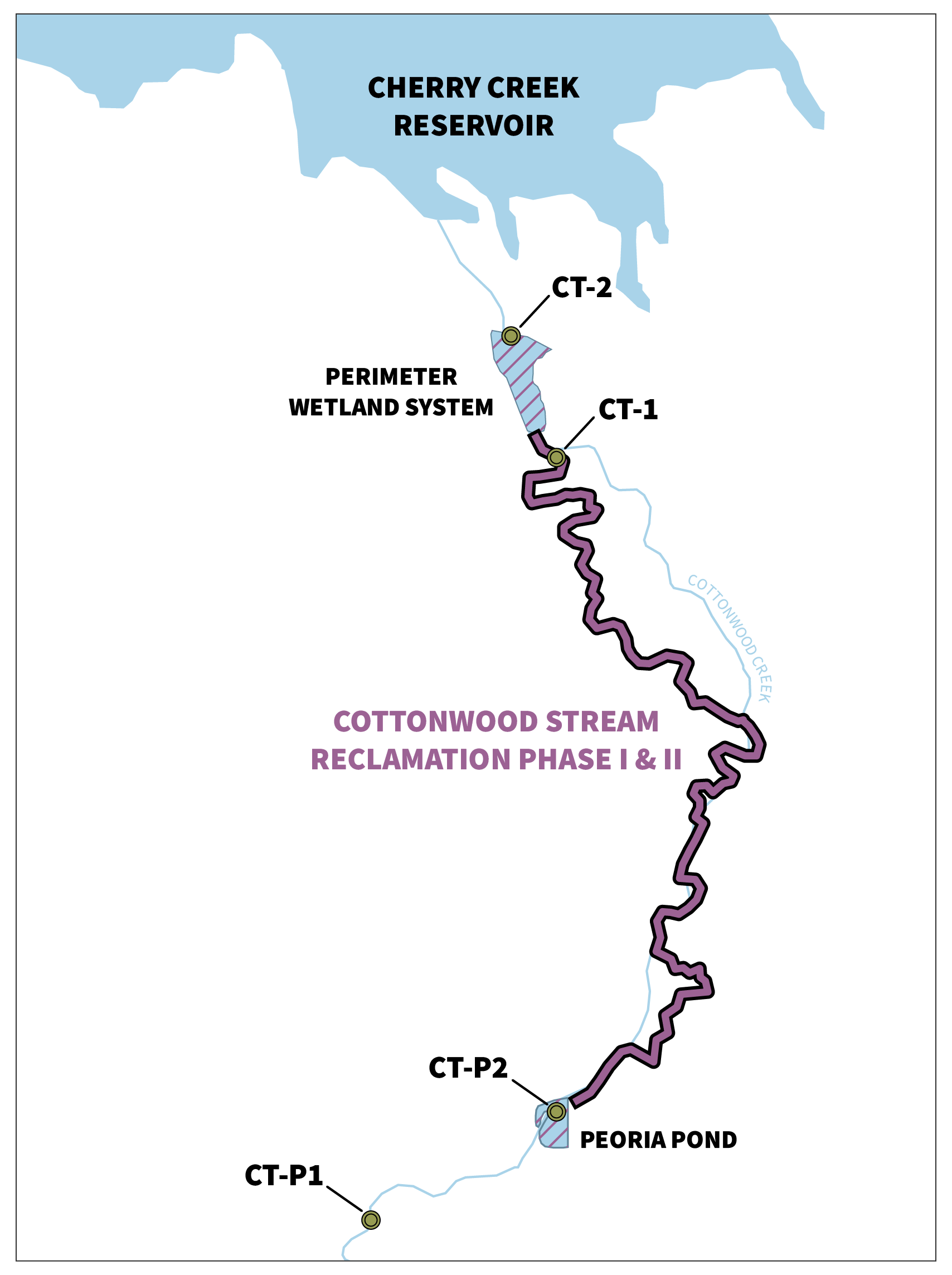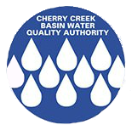PRF Monitoring
Highlights:
During 2022:
- The Cottonwood Creek “treatment train” as a whole reduced phosphorus and total suspended solids in base and storm flow conditions.
- All nutrients were reduced upstream to downstream on McMurdo Gulch
- PRF effectiveness was evaluated for significant changes over time and geospatially using the PRF statistical analysis tool available on the data portal.
The Cherry Creek Basin has multiple pollution reduction facilities (PRFs) in various locations through the watershed, most notably in Cottonwood Creek. Together, stream reclamation and wetland detention systems comprise a passive treatment train approach widely implemented by CCBWQA throughout the basin since the 1990s as an effective water quality strategy to reduce nutrients and sediments, especially during storm events.
The Cottonwood Treatment Train (Peoria Pond, Phases 1 and 2 of stream reclamation completed on Cottonwood Creek downstream, and the Perimeter Pond) showed statistically significant removal efficiencies for phosphorus (TP) and total suspended solids (TSS) when comparing concentrations from above (upstream) to below (downstream) of the Treatment Train during the last 10 years (2013-2022). Likewise, Peoria Pond also showed significant removal of TP and TSS upstream to downstream during storm flow conditions over the same time period. The Perimeter Pond PRF demonstrated significant reductions in TP, total nitrogen (TN), and TSS concentrations in base and storm flow. The McMurdo Gulch upstream to downstream concentration analysis demonstrated a statistically significant reduction of TP and TN, since monitoring began at those sites.
Summary of Reductions in Nutrient and Suspended Solids in CCBWQA PRFs, WY 2022*


Learn More in the WY 2022 Monitoring Report
Useful Links

Cottonwood Creek Treatment Train
Summary
Upstream to Downstream Concentrations Over Time
Net Change Over Time
Percent Change Over Time
Hey! This page is interactive.
- Change the start and end dates to change the dates on the graph
- To learn more about a specific data point, hover over it with your mouse.
